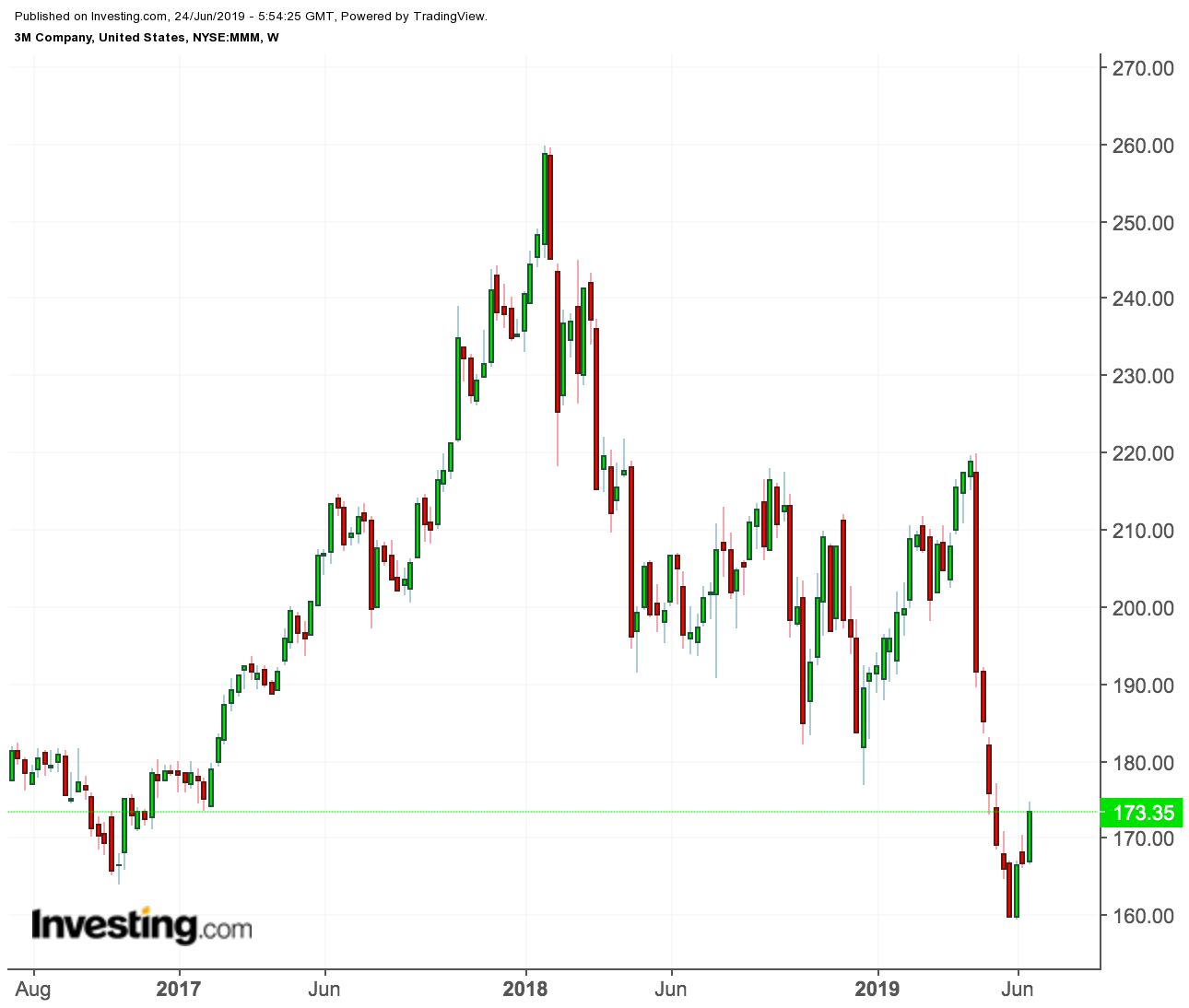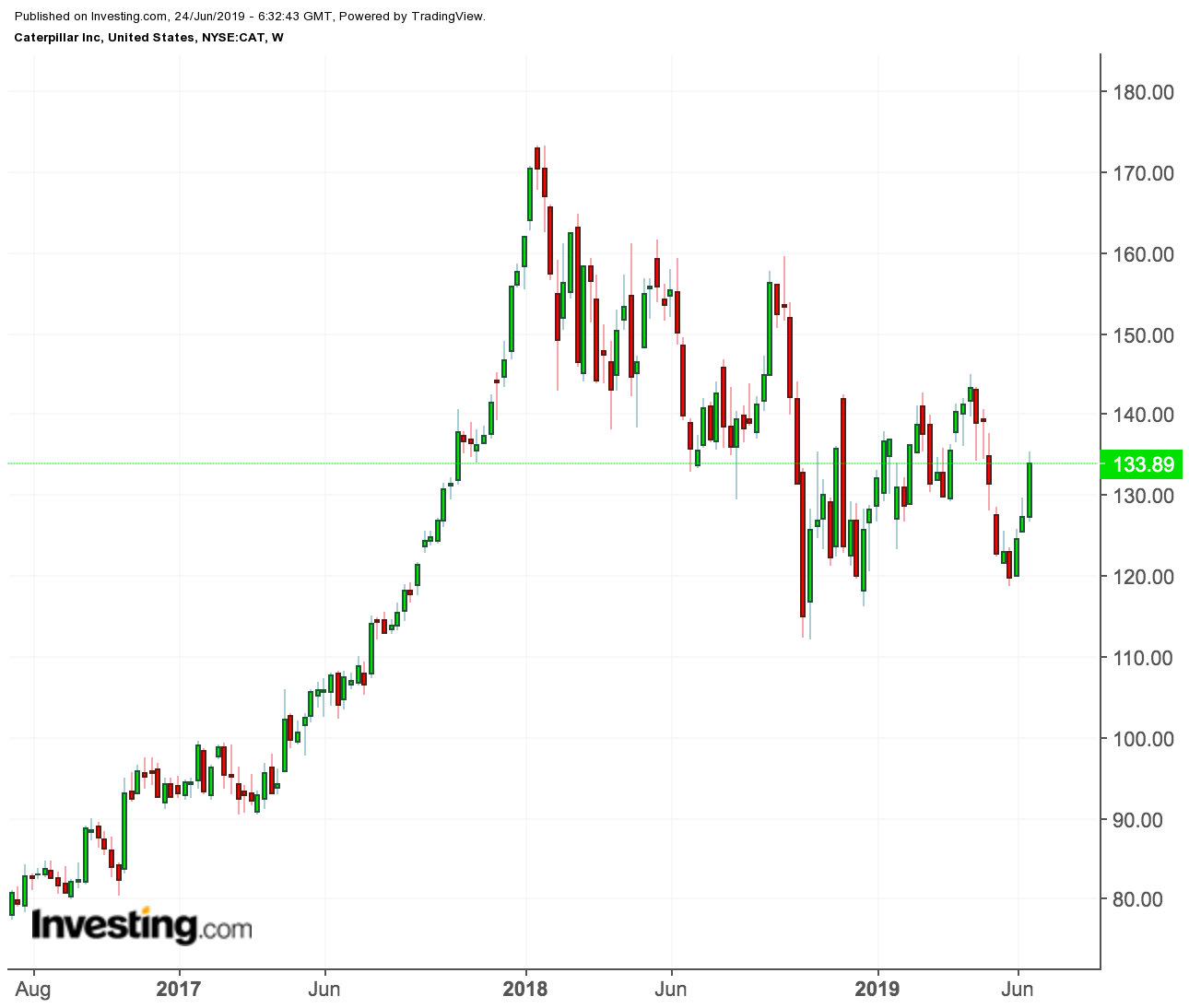It’s probably the most difficult time to predict the future direction of the U.S. stock markets. Despite the myriad powerful headwinds gathering, which could hurt companies’ profitability and future growth, stock investors, in general, are choosing to ignore the warning signs, instead, preferring to view the glass as half-full.
Stocks have continued to show strength in June with the S&P 500 advancing 6% month-to-date by Friday's close, although trade tensions between the U.S. and China linger and there are some clear indications that the U.S. engine of growth is losing its steam. And yet, the S&P 500 surged to a fresh record Thursday while the blue-chip Dow index sits 0.4% from its October closing high.
If you’re skeptical about this one-sided market view, then take a cue from the top industrial stocks that provide early warning signals when things are turning bad. We've picked two industrial giants to understand if the recent strength in the market is backed by economic fundamentals.
1. 3M: Weakness Across the Board
Shares of 3M Company (NYSE:MMM), one of the world's largest industrial conglomerates, remain in a bear market after peaking in early 2018. Since January 2018 the stock has fallen more than 23% and there's little hope it will recover from this slump soon. Down 8.5% since the start of the year, the shares closed Friday's session at $173.22.

The Minnesota-based maker of things from Post-its to air filters and touch screens reported in April its biggest quarterly earnings miss by far in recent memory. Sales fell 5% year-over-year to $7.9 billion in the first quarter, a worse-than-expected outcome. Adjusted profit fell too, and the company lowered its outlook for the year.
That weakness was broad-based, suggesting demand for its industrial products is getting hit from all directions, with a drop in operating income across all five business units.
Sales in its electronics group, which makes products such as films for LCD screens, fell almost 12%, hurt by slowing smartphone demand. The automotive segment suffered as car-makers cut production and inventory. To deal with this sharp slowdown, 3M is tightening its belt and eliminating 2,000 jobs, suggesting any turnaround won’t be coming soon.
For the quarter ending in June, analysts are expecting a 19% decline in earnings per share to $2.09 on sales of $8.04 billion.
2. Caterpillar: An Economic Bellwether Struggling
The shares of powerful mining and construction equipment maker, Caterpillar Inc. (NYSE:CAT), are under pressure on concerns that the company won’t be able to escape the slowdown. Though they've gained 6.6% since January, closing Friday at $133.9, they're down more than 4% since this time last year and the future isn't looking very rosy.

In its most recent earnings report, Caterpillar said inventories were building up, while earnings were hurt by declining market share and “aggressive pricing” from China.
UBS, in a recent note, downgraded Caterpillar stock, saying more than half of the company’s end markets will “peak” in 2019, “pressuring revenue and margins in 2020 as demand declines.”
The weak prospects from Caterpillar, considered an economic bellwether, are in line with the latest global economic forecasts from the IMF and OECD. Both institutions have cut their projections for major economies in 2019 amid geopolitical and trade tensions.
Bottom Line
The warnings from some of the largest industrial companies this year demonstrate that the recent show of strength by U.S. markets lacks depth and is mainly fueled by interest rate expectations. A powerful rally in so-called defensive stocks, such as utilities, consumer staples and real estate, also supports this argument. These are the areas of the markets that investors turn to when the future becomes murkier.
The current market rally, in our view, is built on shaky ground and can’t be sustained unless we see more cyclical areas, such as industrials, taking part in this upward move. Investors should tread very carefully in this uncertain environment.
